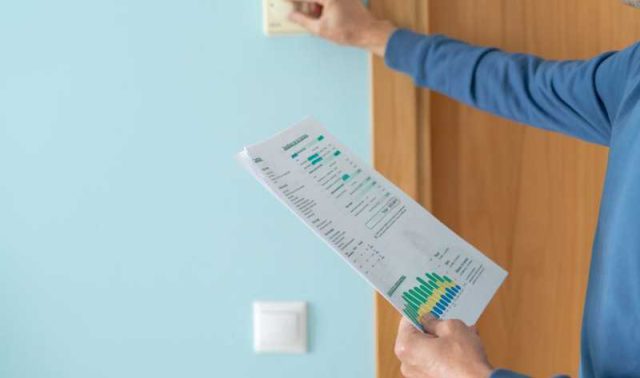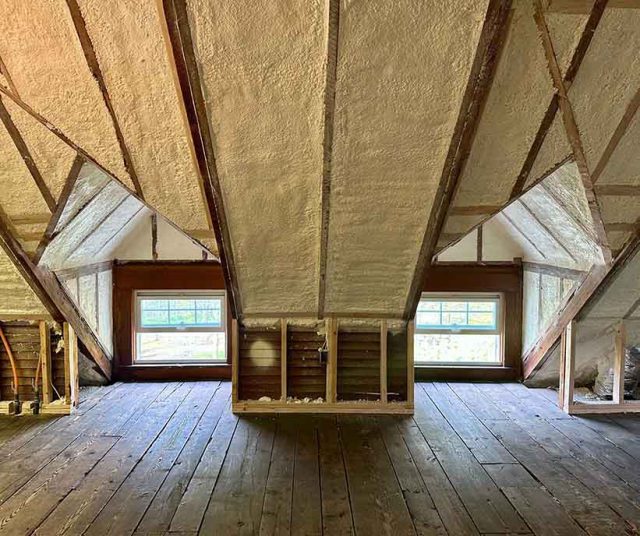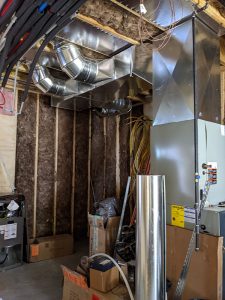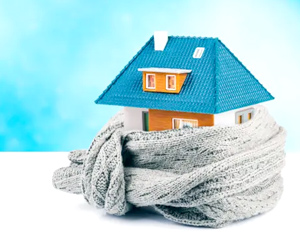Updated May 2025
Understanding how to keep your Grand Rapids home comfortable and energy efficient throughout every Michigan season is important. The key to long-term comfort and savings is installing the right amount of insulation in the right places, especially in your attic and basement. This updated guide covers the essential things you need to know to make smart insulation decisions and enjoy a more comfortable, cost-effective, and eco-friendly home.
Importance and Benefits of Sufficient Insulation
Take advantage of the many benefits proper insulation brings to you and your home. Insulation creates a barrier against fluctuating indoor temperatures, helping to maintain comfort and reduce energy use. A consistent indoor temperature means less stress on your heating and cooling system which leads to lower energy bills and lower carbon emissions for a positive environmental impact and decreased carbon footprint. Plus, insulation has excellent soundproofing properties which enhance privacy and noise reduction. Combine insulation with air sealing to prevent air leakage and add vapor barriers to control moisture for a powerful duo of energy efficiency.
Factors to Consider

When installing insulation, several factors matter. Consider your climate zone, as insulation needs vary across regions. We require higher levels of insulation in Michigan due to our cold winters and moderate summers. The R-value, a measure of insulation’s effectiveness, should guide your insulation material choices, as different types of insulation, such as spray foam insulation, fiberglass insulation, and cellulose insulation offer varying R-values per inch. And choosing between batt insulation and loose fill insulation gives you even more choices.
Furthermore, adherence to Michigan’s building codes and regulations, that specify minimum required insulation levels, is essential, ensuring compliance and safety. A well-informed approach encompassing these elements ensures optimal insulation for energy efficiency and comfort.
Insulation Guidelines by Area
Insulation guidelines vary by area within your home. The Department of Energy offers excellent insight into the best places to insulate, such as your attic and basement.

Attic
Your attic insulation plays a big role in your home’s comfort. In unconditioned attics, insulate between and over the floor joists to seal off the living spaces below and prevent heat transfer. For conditioned attics, insulate the sloped roof and walls to maintain a comfortable environment. Don’t forget to air seal your attic access hatch or pull-down stairs. Using vent baffles at the eaves will keep attic vents clear of insulation and air moving freely. Proper attic insulation also helps prevent moisture buildup and ice dams in the winter.
Basement
Proper basement insulation saves on heating costs and creates a more comfortable space for you and your family. Focus on insulating your basement walls and rim joists (box sills) at the top of your home’s foundation to reduce heat loss and stop drafts. Be sure to use moisture resistant materials such as closed cell spray foam insulation or mineral wool batt insulation and add a vapor barrier if needed.
Air Sealing
Air sealing is equally crucial to tackle gaps, cracks, and leaks to enhance overall insulation effectiveness and maximize energy efficiency. Before adding insulation, seal any air leaks with foam or caulk to boost your insulation’s performance and make a noticeable difference in both comfort and cost.
Recommended Insulation Levels
As we mentioned earlier, here in Michigan, our homes need higher levels of insulation thanks to our frigid winters and varying summers. We fall into climate zones 5,6, and 7 and need a certain R-value of insulation to keep our homes comfortable throughout the year.
Energy Star’s recommended insulation levels for Michigan homes include an insulation level of up to R-60 in the attic. That’s around 18–20 inches of fiberglass or 11–13 inches of cellulose loose fill insulation. (Remember different insulation materials require different thicknesses to reach required R-values.) If you already have 3–4 inches of insulation, add additional insulation to reach at least R-49. Remember to seal air leaks in the attic floor before adding insulation and always measure your current insulation levels to identify thin spots before adding more.
For your basement walls, you’ll want between R-15 and R-19, depending on the material used, such as spray foam or batt insulation. Your band joist/rim joist areas should be insulated to R-10 to R-15. Helpful resources, such as insulation calculators, can give you an accurate estimate of how much insulation may be required. A professional insulation installer will provide you with the most accurate information.
New Insulation Trends and Innovations in 2025
Greener Spray Foam
Today’s spray foam insulation uses environmentally friendly blowing agents. It provides a high R-value and is great for tight spaces like rim joists and irregular attic spaces.
Mineral Wool Insulation
 Made from stone fibers, this material is naturally moisture-, mold-, and fire resistant, with great sound-deadening qualities. It works well between joists/rafters in attics or in basement wall studs.
Made from stone fibers, this material is naturally moisture-, mold-, and fire resistant, with great sound-deadening qualities. It works well between joists/rafters in attics or in basement wall studs.
Higher Recycled Content
Modern fiberglass contains more recycled glass, while cellulose is made from old newspapers. These materials are now less itchy and easier to install—great news for homeowners looking for eco-friendly options.
DIY vs. Hiring a Professional
While DIY may look easy, it often leads to mistakes like missed areas or compressed insulation. Professionals know how to properly install insulation, follow energy codes and regulations, and make sure your home gets the best performance. For hard-to-reach areas expert help is especially valuable. Balancing cost, expertise, and safety is crucial when deciding between these options, but it’s best to rely on the peace of mind a professional brings to the job.
Create an Energy Efficient Home from Top to Bottom
From your attic to your basement walls, the right insulation pays off in year-round comfort and savings. Installing insulation the right way boosts your home’s performance, lowers utility bills, and keeps your space cozy no matter the season.
At Whitson Insulation, we understand the specific needs of Grand Rapids homes and offer expert solutions that assure our customers enjoy a well-insulated home that stands the test of time. Contact us today to learn more.
Works Cited
Department of Energy. (n.d.). Where to insulate in a home. Energy.gov. https://www.energy.gov/energysaver/where-insulate-home
ENERGY STAR. (n.d.). Recommended home insulation R-values. EnergyStar.gov. https://www.energystar.gov/saveathome/seal_insulate/identify-problems-you-want-fix/diy-checks-inspections/insulation-r-values
Insulation Institute. (n.d.). Attic insulation | How much do I need? InsulationInstitute.org. https://insulationinstitute.org/im-a-homeowner/about-insulation/how-much-do-i-need/

